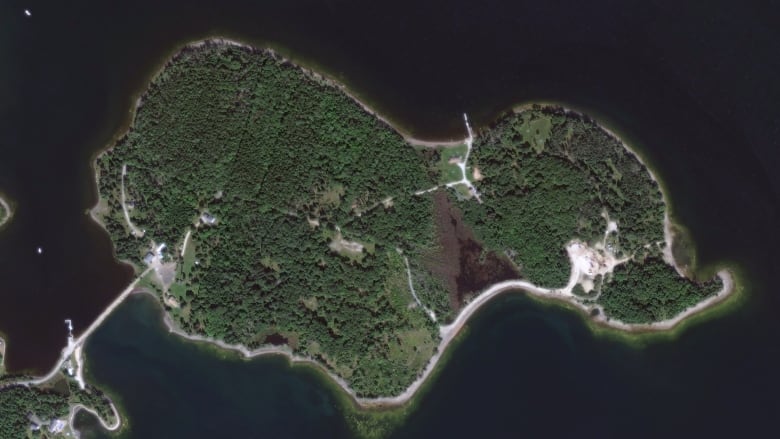Money pit or sinkhole? Retired geologist digs up Oak Island's history
'There is no treasure at the money pit,' Steven Aitken says

A retired geologist has taken decades of experience in the oil business to dig into the history of Nova Scotia's Oak Island.
What Steven Aitkensees when looking at evidence turned up by decades of drilling isn't a money pit it's a sinkhole.
"There is no treasure at the money pit," Aitken told CBC'sMaritime Noonon Friday.
People have been searching for buried treasure on the island for more than 200 years.
The mystery of the money pit is known around the world, thanks to the success of the History channel show The Curse of Oak Island.
Aitken started watching the show when it first aired, but as the years progressed grew frustrated that there "was not enough of a geological interpretation."
"So I decided to venture out on my own, do my own research on the geology," he said.
Aitken used three main sources for his research two consulting reports done in the late 1960s and early 1970s byWarnock Hersey and Golder Associates, as well as a 1995 report by theWoods Hole Oceanographic Institution.
Collapsed underwater caves
The bedrock under the east side of Oak Island, where the money pit is located, is made up of Windsor Group limestone and gypsum.
"Given the right conditions, such as temperature, pressure, pore fluid composition, quite often these minerals, especially gypsum, they're prone to dissolution," Aitken said.
What you're left with is essentially a cavity in the bedrock, or a kind of cave. At the money pit, Aitken said the geological evidence suggests the roof of the cave collapsed.
He said there are also other sinkholes nearby, which further shows the so-called tunnels and pits are not engineered, as the show suggests.
"These are not man-made. They are naturally formed features, they take sometimes thousands to even millions of years to form," he said.

But Aitken said while mystery hunters have been looking for buried treasure, they've missed the real riches.
"To me personally, the treasure on Oak Island has already been found in the form of archeological artifacts that have been discovered," Aitken said
"As a collection, these artifacts tell a rich history about activity on the island. That could be logging, farming, military operation, even shipbuilding and repair. To me that's the treasure."
With files from CBC's Maritime Noon












_(720p).jpg)


 OFFICIAL HD MUSIC VIDEO.jpg)
.jpg)



























































































